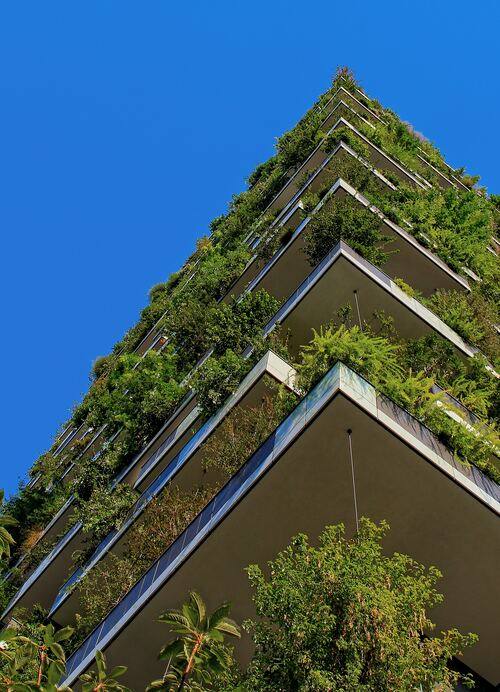Shake Off Climate Anxieties Around Us. Together.
We are raising €40,000 to reach 1.000 people with our activities in 2023-2024.
Climate change adaptation examples for your organisation
As the climate changes, organisations and communities are faced with new challenges in their surroundings. Meanwhile, organisations are dealing with several competing priorities, so why should you focus on how to be more sustainable at work or in your community? Climate change can have a tangible impact on the operations of the organisation. It can increase operating costs, impact resource availability, or change customer priorities. Finding out what is a climate action plan before this happens can help create future business plans and prepare for unexpected contingencies.
These climate change adaptation examples serve as an idea bank for things your organisation can do to better address climate impacts and how to be more sustainable at work and beyond.
Climate change adaptation examples for a warmer climate
With an increase in temperature, heat waves are becoming more common around the world. What is a climate action plan to cool down your indoor spaces and the surrounding environment sustainably?
Climate change adaptation examples that help with cooling include green and blue infrastructures. These infrastructures may involve increasing the numbers of trees and plants surrounding the buildings for a cooling effect, as well as expanding the number of fountains or ponds. These natural features help manage heat, as trees create shadow and cool things down through evapotranspiration. Meanwhile, bodies of water can also help through evaporation or mist. Roofs painted in white on the other hand help reflect light, also reducing the heat buildup.
Other climate change adaptation examples to protect from a rising temperature are adopting a more energy efficient cooling system. Air conditioning powered with solar energy can help achieve this. The insulation of buildings can also be improved to reduce the effect of outside air temperature and to ensure lower energy consumption to keep inside areas cool.
It can be equally useful to take action which doesn’t require adapting physical infrastructure. Changing your working schedule so you don’t work during the hottest time of the day can help reduce exhaustion and risk of heat stroke. There’s a reason why Siesta is a thing, right?
Climate change adaptation examples for a wetter climate?
Climate change may lead to increased precipitation and storms in certain areas, creating risks for infrastructure and operations. Climate change adaptation examples in increasingly wet conditions include improving the resilience of buildings and facilities against storms and flood damages, such as moving offices from areas at risk of flooding, or elevating buildings to protect them from floods. Early warning systems alert you about imminent extreme weather conditions such as storms.
Investing in green and blue infrastructure can also help manage and retain water during heavy rains. Green areas allow the water to be absorbed into the soil, while pools and ponds collect water, reducing the immediate excess of water pouring onto the paved streets. This can reduce the risk and damages of flooding.
Extreme weather events may lead to problems with energy supplies, so installing rooftop solar panels or other energy generating facilities can help protect your organisation from sudden disruptions. It may be helpful to come up with contingency plans for floods or storms so you know what to do if and when it happens.


Climate change adaptation examples for a drier climate
Climate change can impact rain patterns, making some areas more arid. This can lead to challenges with water scarcity and even desertification. Climate change adaptation examples for drier climate revolve mostly around water management. For instance, rain water can be collected and saved for use in drier periods.
Improving the efficiency of water use in industrial processes and irrigation are especially important, as these are some of the sectors with the most water consumption. In daily life, offices and organisations can implement water savings policies. Increasing awareness on the usage of water and discussing water policies with colleagues can facilitate their implementation and increase climate change awareness and action in your organisation.
Otherwise, a more hands-on approach could be taken by installing water-efficient appliances when old appliances need to be replaced. Fixing possible leaks in the water pipes can also save a considerable amount of water.
Changing seasons, changing business
Climate change leads to unusual and more unpredictable seasons. This is why organisations need to put ample time into pinpointing how seasonal changes impact their business, and build their adaptation strategies for climate change. For example, climate change will likely impact the length of seasons, as warmer average temperatures make winters shorter and summers longer.

Some sectors are particularly dependent on seasonal variations, including agriculture, tourism and seasonal equipment production. Their operations are already impacted by climate change. How to be more sustainable at work is even more important under these conditions.
Let’s take an example to see how an organisation is tackling relevant seasonal changes due to climate change. Mountain Equipment Co-op (MEC) is a Canadian outerwear company, whose operations are intrinsically impacted by weather conditions and the length of seasons. As climate change induces more variability to the seasons, MEC may need to produce less products for the winter season and focus more on summer equipment. The company has taken steps to include climate considerations at the highest level of management so that climate risk assessments can be used as the basis of business planning for the upcoming year.
Using weather forecasting, they are able to better estimate the need for products in the upcoming year. Climate change is also impacting their supply chain, as droughts may affect cotton production in certain areas. Therefore, they have diversified the locations of raw material production to reduce dependency on certain producers.
Find support in implementing the climate change adaptation examples
No one organisation or person is alone with dealing with climate change. Strengthening collaboration with other organisations to share best practices on climate adaptation can reduce the efforts needed to research how to be more sustainable at work in your sector. Similarly, collaboration could be built internally by empowering team members to research and understand future climate risks relevant for your organisation. If you need help getting started, you can increase environmental awareness at your organisation by organising a Dialogue Day, or start off the conversation with a fun climate adaptation game on Game Day.
Seeking guidance on the costs of climate impacts and factoring those into future planning can help avoid unpleasant surprises down the line. This may be supported by hiring a climate adaptation expert who is able assess climate related risks and introduce the organisation to what is a climate action plan with recommendations and strategies. AI solutions are making mapping climate risks more affordable on the local level as well. Developing products and services that can stand extreme weather can help tap into opportunities that arise with the changing climate.

Contact us
info@dayad.org
+31 (0)6 16692266
Follow Us
Registration information
KvK 73411620
RSIN 859523202
Privacy Policy

